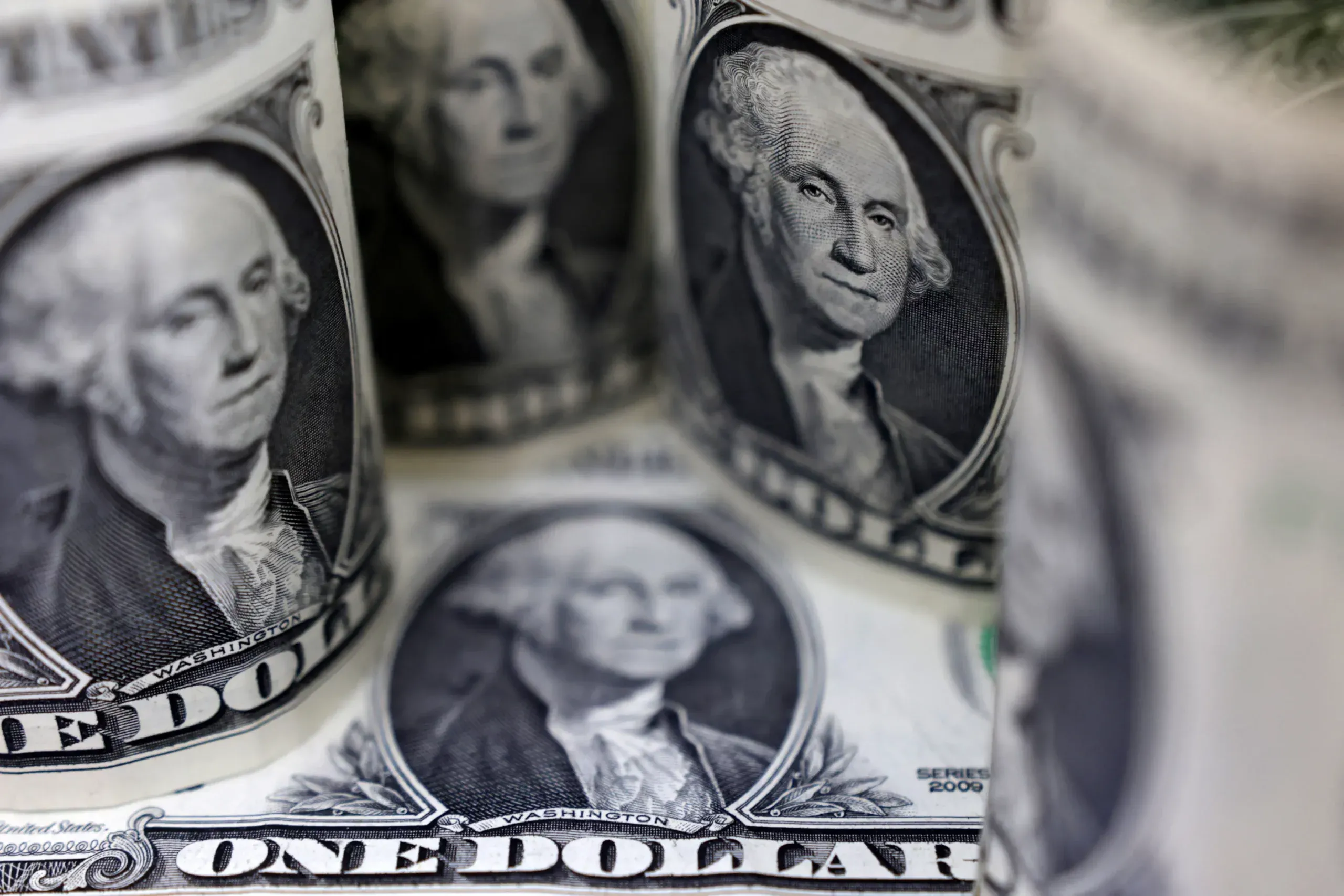
Dollar trades around two-week high as U.S. bond yields surge
(Corrects days of 0.5% falls in paragraphs four and 11 to Wednesday, from Tuesday)
By Harry Robertson and Kevin Buckland
LONDON/TOKYO (Reuters) – The dollar held steady on Thursday after rising to a two-week high as a rout in U.S. Treasuries pushed up yields, boosting the currency’s allure.
The index tracking the U.S. currency against its major peers climbed to 105.18 overnight, the highest since May 14, and was slightly lower at 105.05 in early European trading.
A two-day, 15-basis point jump above 4.6% for long-term Treasury yields helped push the dollar higher. The rise in yields, which move inversely to prices, has been driven by a spate of stronger-than-expected data, tough words from Federal Reserve officials, and a run of poorly received bond auctions.
The euro suffered as U.S. yields rose, dropping 0.5% on Wednesday to touch a two-week low of $1.0789 overnight before bouncing somewhat to $1.0806.
“If you look at euro-dollar volatility it’s exceptionally low,” said Chris Turner, head of global markets at ING. “It’s going to need some big new input to break euro-dollar out of recent ranges. So by recent standards yesterday’s 0.5% move was quite large.”
“People will today be keeping an eye on the bond market to see if there’s any further sell-off,” Turner added, saying the solid demand for a Japanese government bond auction could help steady global debt on Thursday.
The yen was the biggest mover on Thursday morning in Europe, with the dollar down 0.4% against the Japanese currency at 157.08 after hitting a one-month high of 157.72 the previous day.
Charu Chanana, head of FX strategy at Saxo Bank, said traders may be nervous about nearing the 158 level with the threat of intervention by Japanese authorities looming in the background.
Market players suspect Japan intervened to prop up its currency at the end of April and early May; data out tomorrow is likely to confirm that.
“Japanese authorities intervened near this level on May 1, and the market now views 158 as a critical point for potential intervention,” Chanana said.
Sterling, which hit a more-than one-month high earlier this week, also fell 0.5% on Wednesday and last traded at $1.2704, little changed on the day.
Expectations for Federal Reserve interest rate reductions this year have been pared back amid signs of sticky inflation, most recently with a surprise uptick in consumer sentiment in data on Tuesday.
Traders currently see 56.6% odds of a quarter-point cut by the conclusion of the September meeting, down from 57.5% odds a week ago, according to the CME Group’s FedWatch Tool.
Revised U.S. GDP figures are due later in the day, followed on Friday by the main macro event of this week, the release of the Personal Consumption Expenditures price index – the Fed’s preferred measure of inflation.
Price data for the euro zone is also due on Friday, following a stronger-than-expected April inflation reading for Germany on Wednesday.
(This story has been corrected to change the day of 0.5% fall from Tuesday to Wednesday, in paragraphs four and 11)
(Reporting by Harry Robertson in London and Kevin Buckland in Tokyo; Editing by Shri Navaratnam and David Holmes)


